




How to Add Fractions?
You must know about fractions. Fraction is a part of the whole. In fractions, we have a numerator and denominator; the numerator represents parts, and the denominator represents the whole in the fraction. In this article, you will be learning about the addition of fractions.
In addition of fractions, when the denominators are the same, then the addition of fractions seems easy, but when denominators are different then, how will you add them?
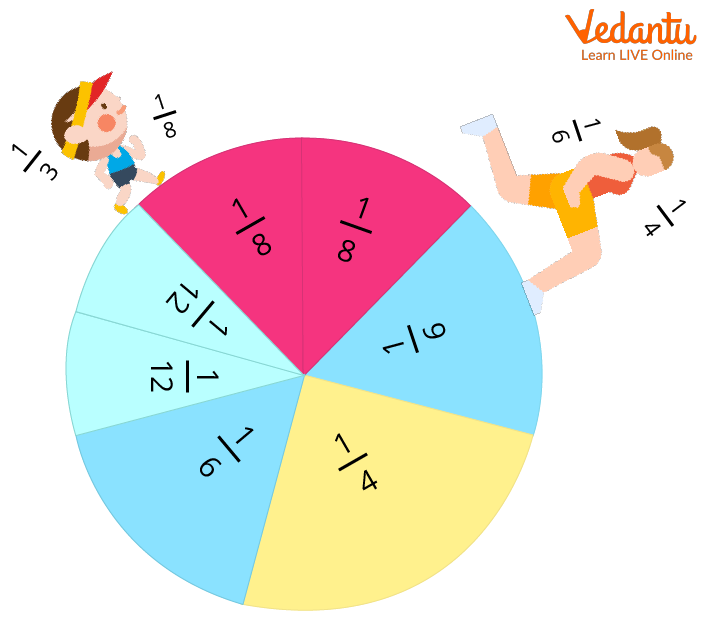
Fractions
Before we get into the matter, we need to know what a fraction is, what a like and unlike fraction is, and how to convert an unlike fraction to a like fraction.
There are numerous ways to make fractions enjoyable for children. As we deal with fractions daily, it's simple to let them enjoyably explore the concept.
Definition of a Fraction
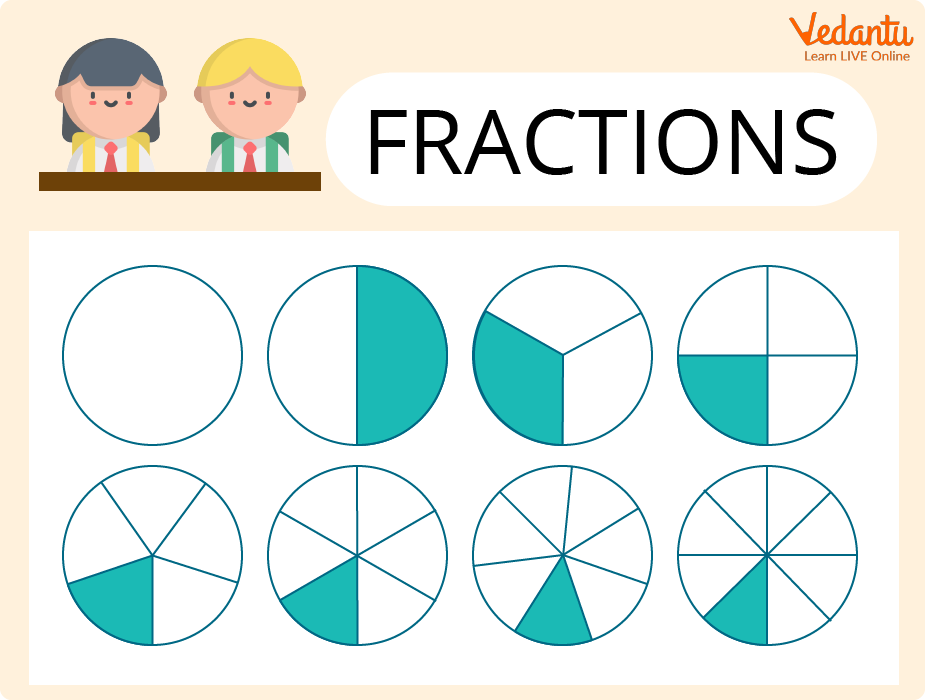
Learning Fractions
Fractions are used to represent smaller portions of a larger whole. The components could make up a single thing or multiple things. In any case, they combine to form what is known as a whole.
Types of Fractions
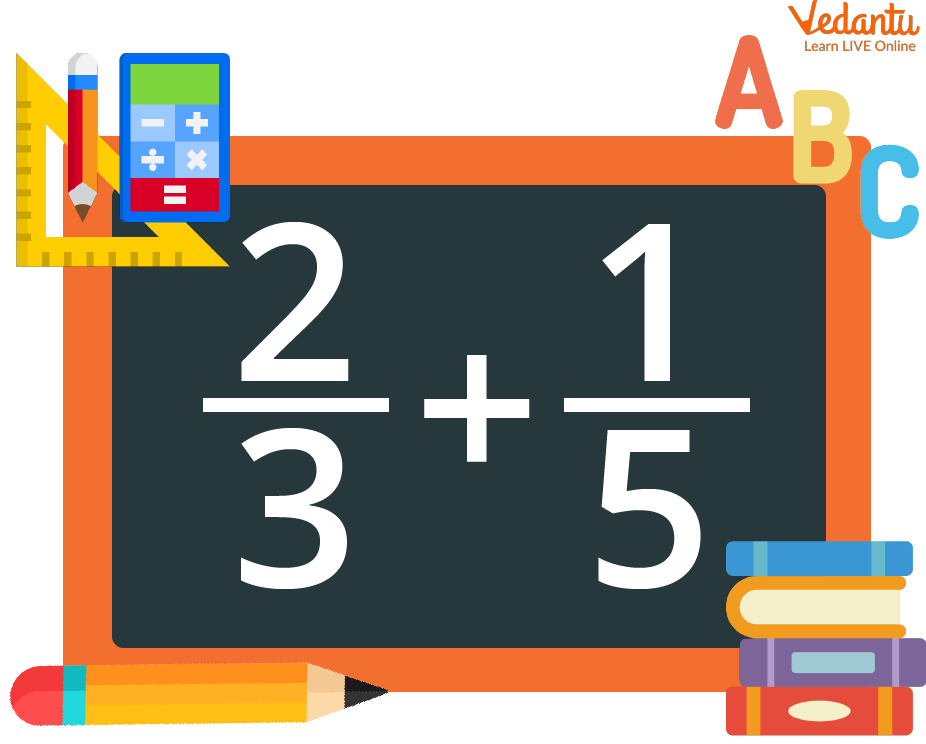
Adding Fractions
To add fractions successfully, students must first understand the differences between each type of fraction.
Parts of a whole are represented by fractions. In a fraction, the denominator represents the number of equal parts in a whole, and the numerator represents how many parts are being considered.
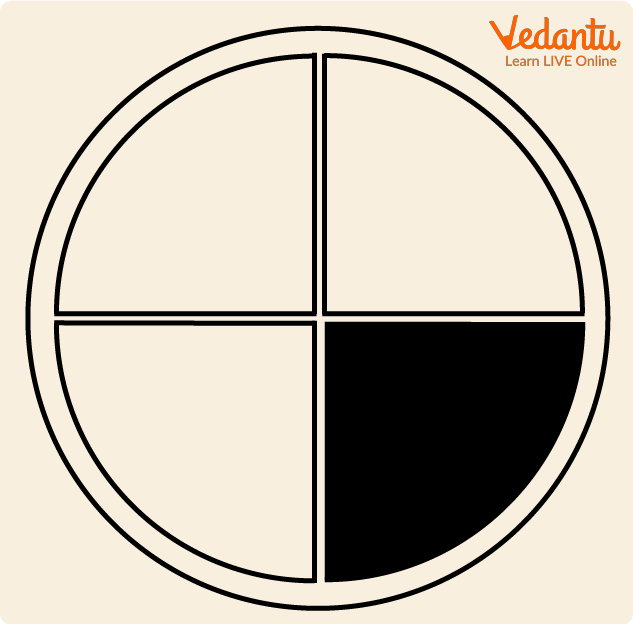
Circle Divided Into Four Parts
The circle is divided into four parts in the diagram above. As a result, the fraction is $\dfrac{1}{4}$ or a quarter.
Proper, improper, and mixed fractions are the three types of fractions.
Proper Fraction: The numerator is less than the denominator. e.g- $\dfrac{3}{4}$ (three quarters)
Improper Fraction: The numerator is greater than the denominator. e.g- $\dfrac{7}{4}$ (seven quarters)
Mixed Fraction: A whole number and a proper fraction combined. e.g- $1\dfrac{3}{4}$ (one and three quarters).
Furthermore, fraction equations will be divided into two groups:
Like fractions: Fractions with the same denominator. e.g- $\dfrac{1}{4}$ and $\dfrac{3}{4}$
Unlike fractions: Fractions with different denominators. e.g- $\dfrac{1}{4}$ and $\dfrac{3}{8}$
How to Add Two Fractions- Steps for Adding Fractions
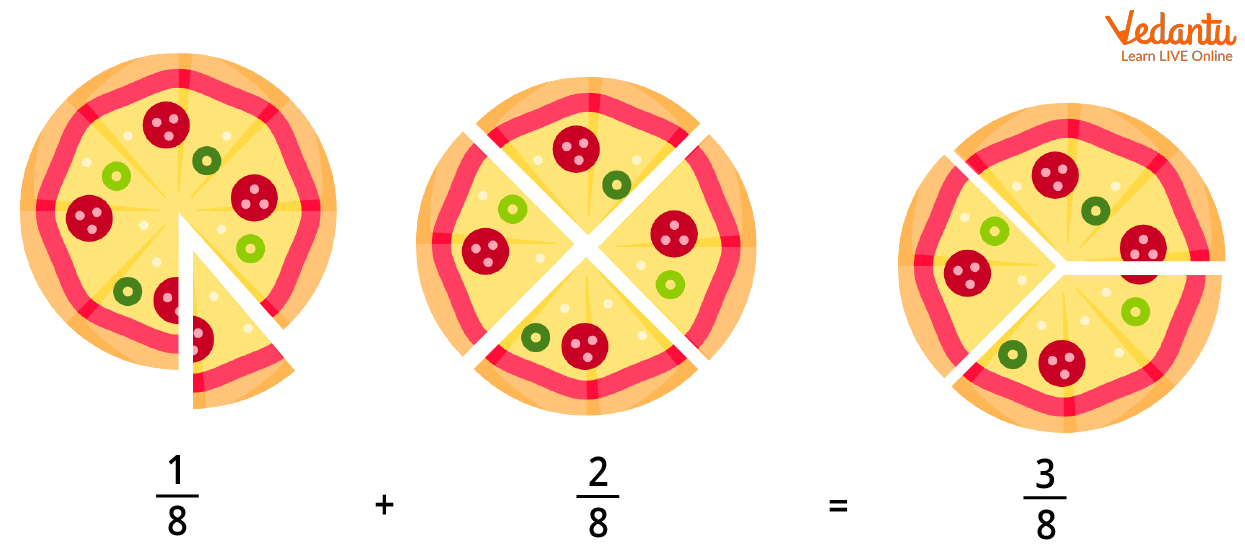
Teaching Addition Through Pizza Slices
The Addition of Fractions may appear difficult at first, but with practice, you'll be up and running as quickly as possible.
Here are a few steps on how to add fractions:
Check to see if the denominators of the fractions are the same.
Convert them to equivalent fractions with the same denominator if they don't have the same denominator.
Add the numbers in the numerator once they have the same denominator.
Put the new numerator over the denominator in your answer.
When you converted the fractions to the same common denominator, the denominator may have changed.
Tips for Adding Fractions
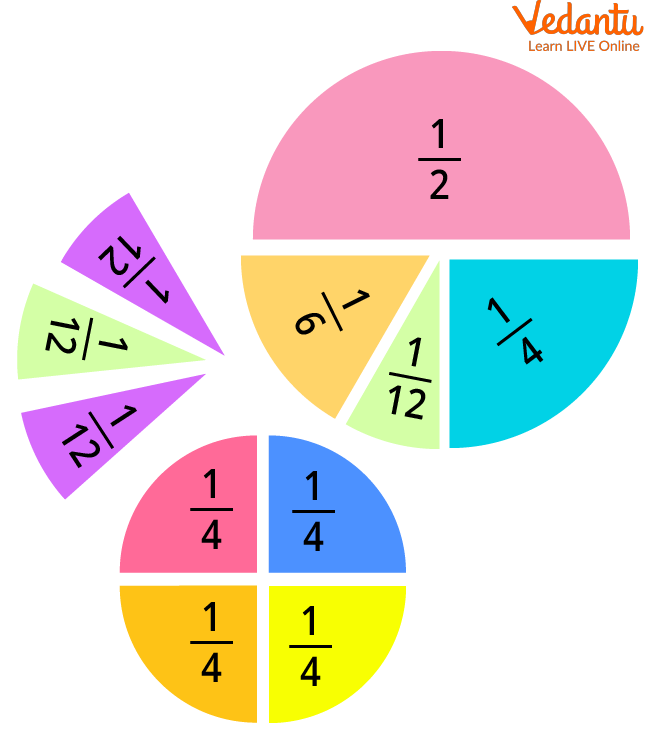

Learning Fractions in Part-whole
Before you add fractions, make sure the denominators are the same.
The value of a fraction remains the same when the top and bottom are multiplied by the same number.
Converting fractions to common denominators should be practised. Adding fractions is the most difficult part.
After you've finished the addition of fractions, you might need to simplify your answer.
If you're adding mixed numbers, make sure to convert them to improper numbers first.
Addition of Fraction Examples
Addition of Fraction With Same and Different Numerator
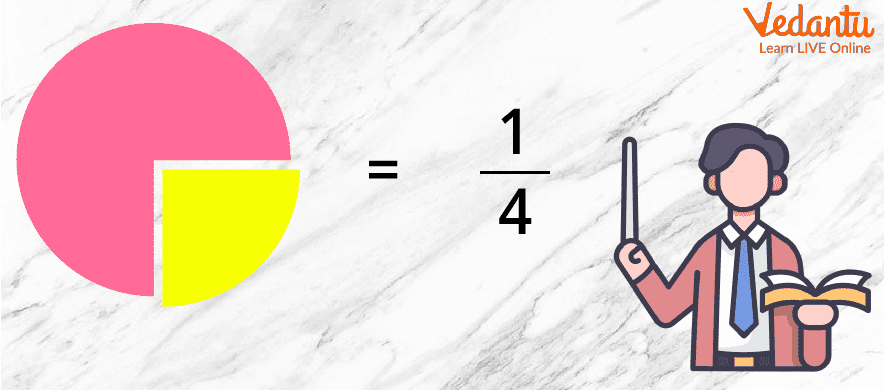
Let’s Learn
Following are examples of the addition of fractions-
Example 1: ($\dfrac{5}{8}+\dfrac{2}{8}$)=?
Step 1: Denominators are the same.
Step 2: Take the numerators 5 and 2, respectively and add them.
= $\dfrac{5+2}{8}$
Step 3: Give the final answer.
= $\dfrac{7}{8}$
In the above example, we learned how to add two fractions.
Example 2: $\dfrac{3}{8}+\dfrac{5}{12}$=?
Step 1: Denominators are different. So, take the Least Common Multiple (LCM).
24 is a common multiple of 8 and 12.
Step 2: Make the denominators equal by multiplying $\dfrac{3}{3}$ with $\dfrac{3}{8}$ and multiplying $\dfrac{2}{2}$ with $\dfrac{5}{12}$.
$\Rightarrow \dfrac{3}{8}=\dfrac{3}{8}\times \dfrac{3}{3}$
$=\dfrac{9}{24}$
Also, $\Rightarrow \dfrac{5}{12}=\dfrac{5}{12}\times \dfrac{2}{2}$
$=\dfrac{10}{24}$
Step 3: Take the numerators and add.
$\Rightarrow \dfrac{3}{8}+\dfrac{5}{12}$
$=\dfrac{9}{24}+\dfrac{10}{24}$
$=\dfrac{9+10}{24}$
Step 4: Answer = $\dfrac{19}{24}$
In the above example, we learned the addition of fractions with different denominators.
Types of Fractions
Let’s Practice

Solving Problems
Learning from the addition of fractions examples, let us solve the following problems on our own. Following are the fraction addition sums-
1. Add: $\dfrac{7}{10}+\dfrac{2}{10}$ (Ans: ($\dfrac{9}{10}$))
2. Add: $\dfrac{5}{10}+\dfrac{2}{10}$ (Ans: ($\dfrac{7}{10}$))
Summary
To summarise, students must understand that fractions are more than just shading and colouring. A fraction is a part of the whole. A common fraction is a numeral which represents a rational number. Fractions are numbers that lie between two consecutive whole numbers. Use fractions in everyday conversations as a parent, relate fractions to real-life situations and provide examples from everyday activities such as cooking, baking, time, and measurement.
FAQs on Addition of Fractions
1. What is the Use of Fraction?
The word ‘Fraction’ is derived from a Latin term ‘Fractus’ which means to break. It is from here that words like ‘fracture’, ‘fragment’, ‘fractal’, ‘diffract’ etc are generated. Division can be represented in two ways that is fractions or decimals. We use fraction to represent one or more equal parts of something. Now, for example if there are 5 pastries and you have eaten 3 of them. Then we use fraction to represent the total number of pastries and the number of pastries you have eaten. Therefore, ⅗ is how we will represent it. We can use fractions in our day to day life for various uses.
2. What are the Basic Properties of Fractions?
Few Basic Properties of Fractions are:
The value of a fraction does not change if the numerator and the denominator of a fraction are multiplied by the same (non-zero) number.
The value of a fraction does not change if the numerator and the denominator of a fraction are divided by the same (non-zero) number.
Dividing the numerator and denominator of a fraction by the same number is usually called cancelling.
3. What are the rules for fractions, and why aren't the denominators added together?
To add or subtract the fractions, the denominator must be the same (the bottom value). It's just a matter of adding or subtracting the numerators if the denominators are already the same. If the denominators differ, a common denominator must be decided.
A denominator specifies the number of equal pieces that make up one unit. When adding fractions, if you add the denominators, the new denominator will not describe how many equal pieces are in one unit.
4. What does adding fractions with different denominators require?
By determining the LCM of the denominators and rationalising them, make the denominators of the fractions the same. Keeping the denominator the same, add the fractional numerators. To obtain the final sum, simplify the fraction.
5. What is the best way to explain adding fractions with various denominators?
You must use equivalent fractions with a common denominator if the denominators are different. To achieve this, you must identify the two denominators' least common multiples (LCM). Rename the fractions with a common denominator before adding those with different denominators. Later, include and simplify.























